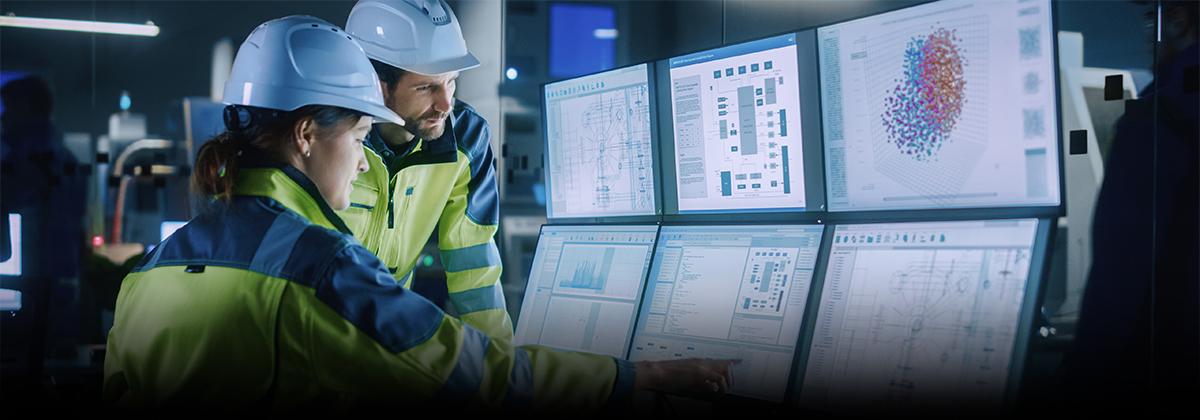Just-in-case is replacing just-in-time for manufacturing supply chains as the aftershocks of the pandemic and Brexit continue. Digital solutions are emerging as the key to resilience.
Manufacturing supply chains have never been more complex and, as the pandemic proved so painfully, more vulnerable to unexpected shocks. The unprecedented disruption to the maintenance engineering procurement systems we once took for granted has certainly focused minds on resilience.
A recent report from Make UK found that, “supply chain resilience is currently top of the agenda for policy makers, government, and business leaders alike. External business factors such as the pandemic, Brexit, and large-scale geopolitical shifts such as the Russian invasion of Ukraine have highlighted how important it is to invest in global supply chain resilience”.
The report, Operating Without Borders – Building Global Resilient Supply Chains, revealed that manufacturers are shrinking the geographical spread of their global procurement networks. Forty two percent of organisations surveyed had increased the proportion of UK-based suppliers, as a way of mitigating risk in a globalised world.
Making the case for digitised supply chains
If sourcing products closer to home was the partial quick-fix, the undisputed long-term solution for creating supply chain resilience is digitisation.
A report by McKinsey and Company urges supply chain leaders to grasp, “a once-in-a-generation opportunity to future-proof their supply chains”, building on the lessons of the pandemic.
It goes on to identify digital technology as a key solution to supply-chain disruption, stating: “The complexity and diversity of supply chain risks require smart management tools, and leading companies are applying a range of new techniques, from digital alerting systems to track potential disruptive events to risk ‘heat maps’ that help them focus their attention on high-risk regions and suppliers.”
Make UK’s research shows that while manufacturing organisations have the ambition to digitise their supply chains, a significant number are failing to convert their intention into action.
Their survey showed 42% of manufacturers intended to increase investment in technology to make their supply chain more responsive and flexible. The industry appears less advanced when it comes to implementation, with 28% saying they have not developed an approach to implementing digital supply chain solutions.
Just 20% of manufacturing organisations said they were at an advanced stage of implementation and are looking keenly at emerging technologies with a view to early adoption.
"There are many ways digitalisation can be introduced to businesses by partnering with a strategic supplier."Emma Botfield, Managing Director for the UK & Ireland, RS
Getting started on you digitisation journey
It’s easy to get wrapped up in the idea that supply chain digitisation for maintenance engineers is a purely reactive response to external forces beyond our control. But digital transformation is in itself a driver of competitive advantage, and when seen as such, it’s much easier to generate momentum, not to mention funding, to get the process started.
It’s also important to remember that your organisation doesn’t need to make the leap in isolation. “There are many ways digitalisation can be introduced to businesses by partnering with a strategic supplier,” says Emma Botfield, Regional Managing Director (UK and Ireland) at RS Group.
“From eProcurement, digitised inventory management, through to condition monitoring, digitalisation has never been a more critical element in any organisation. Digitalisation can give maintenance engineering more visibility and creates the agility to make better and quicker decisions.”
Making the right technology choices
Your organisation’s supply chain is unique and the process of digitisation must deliver a solution that meets the needs of the operation. That requires a level of thought and planning that’s not always in evidence, says Gary Harvey, Head of Field Sales for RS Maintenance Solutions.
"You need to understand what the word ‘resilience’ means for your department and for the wider organisation."Gary Harvey, Head of Field Sales for RS Maintenance Solutions
He has this advice for maintenance engineering leaders: “You need to understand what the word ‘resilience’ means for your department and for the wider organisation. I think the majority of manufacturing industries, don’t give this the attention it warrants ”
Once you have a clear understanding of your organisation’s resilience needs it’s time to start working out what technology you’ll need to deliver them.
Make UK’s report offers detailed insights into the supply chain monitoring technology currently deployed in the UK manufacturing sector. Dashboards and analytics are the most popular category with 57% of organisations using them, thanks to their simplicity of use, widespread availability and low costs.
Real-time sense and response systems are in use at 22% of organisations that took part in the survey. More advanced technologies like AI and machine learning are in use at 19% of organisations. Augmented and virtual reality (12%), robotics and automation (20%) and blockchain (9%) are slowly being adopted within digitised supply chain systems.
Supply chain disruption is now a leading threat to business continuity, profitability and, in the worst cases, survival. Rampant inflation, soaring energy costs and geopolitical instability will define the context in which we do business for some time to come.
For maintenance engineering operations, the digitisation of supply chain monitoring brings resilience, flexibility and competitive advantages, at a time when volatility, disruption and doubt have become part of the new normal.





